Quotation
from Clark [DeVoto, pp. 160-161]:
Gallery of Images
Digital Elevation Models offer one view of the terrain. Digital Chart of the World. Contour interval of 1000 feet. The Gates of the Rocky Mountains are shown as a red dot.
USGS contours, Digital Elevation Model. Contour interval of 10 feet.
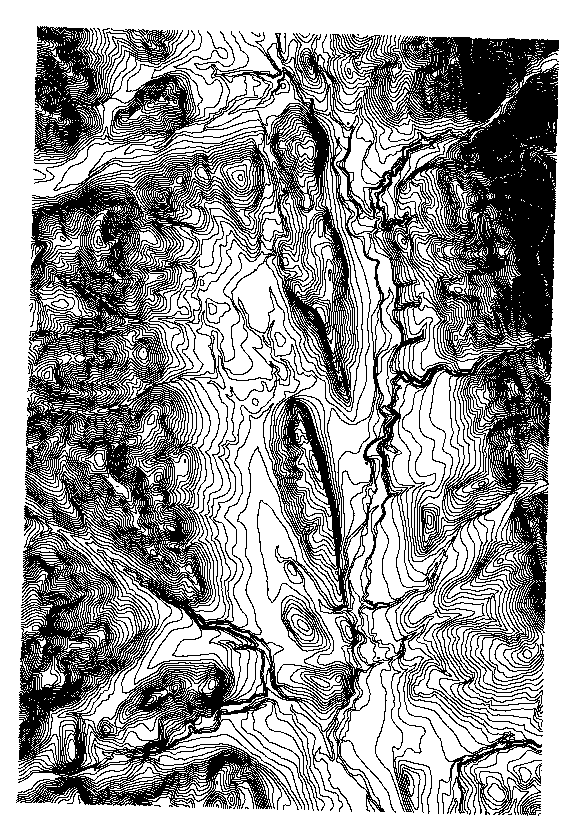
USGS contours show a much more detailed picture than does the Digital Chart of the World. |
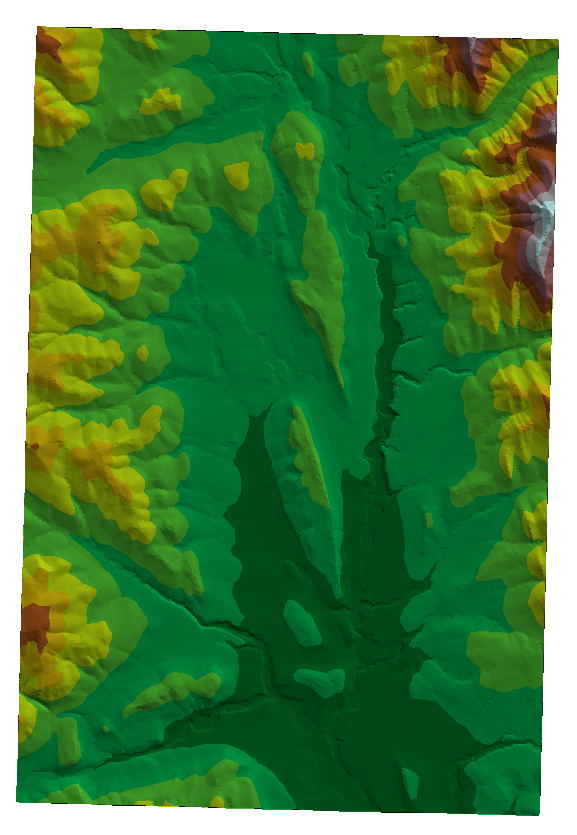
Triangulated Irregular Network created from the USGS DEM. |
DeLorme Topographic Atlas on CD: contour interval of 100 feet.
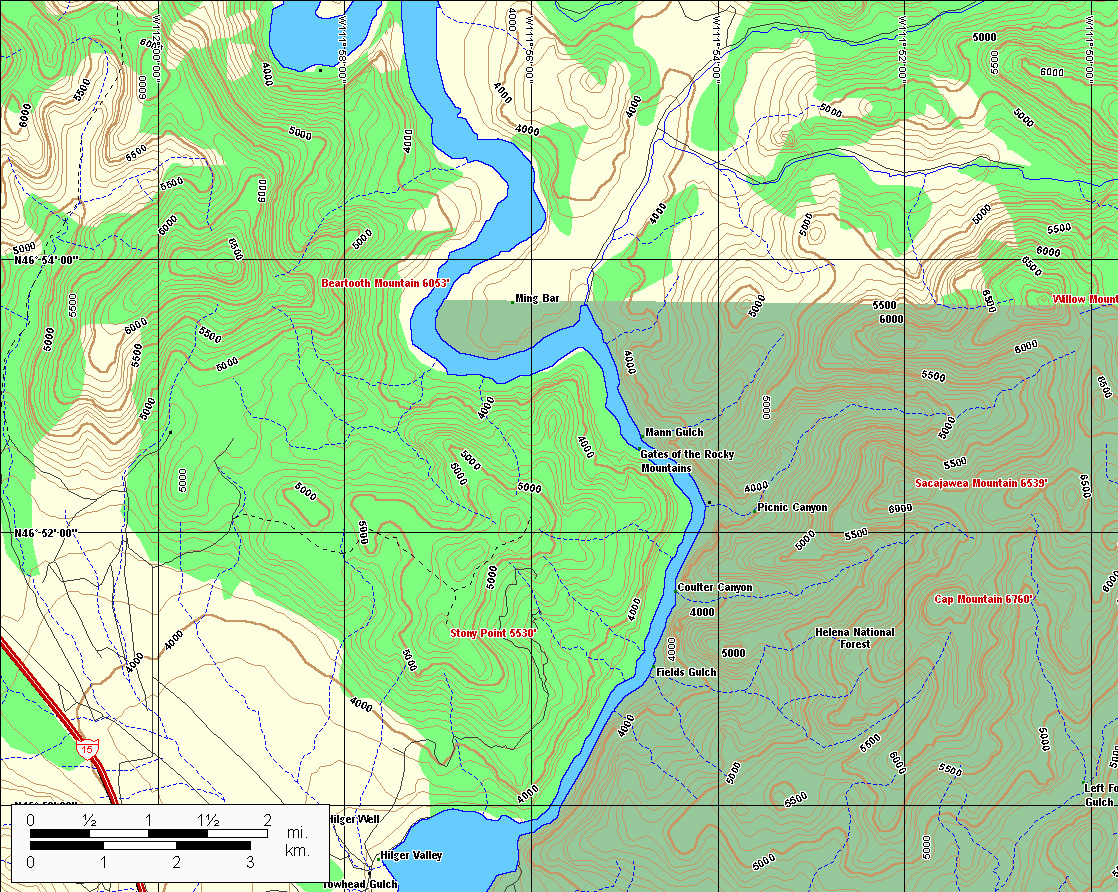 |
Scroll to the right to see the full display. The Gates of the Rocky Mountains are shown as a red dot.
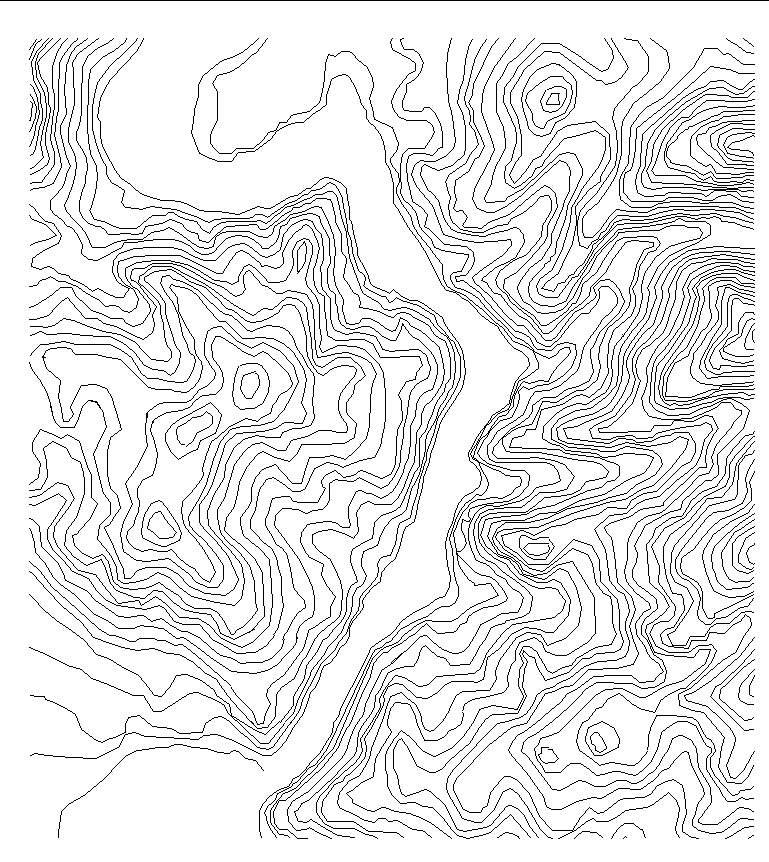
Digitized contours at the 100 foot contour interval level. |
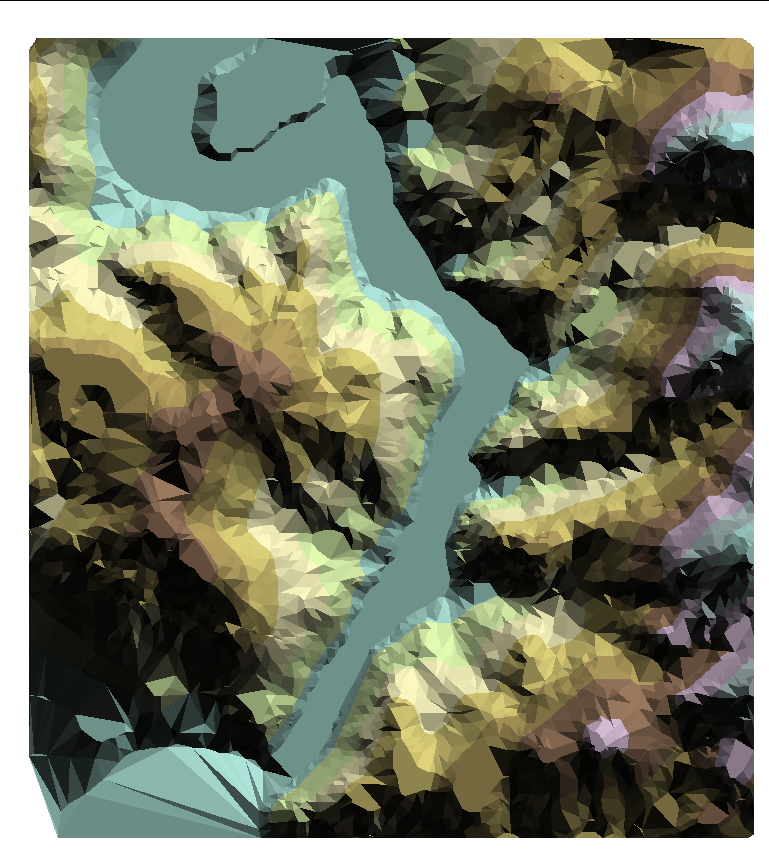
Triangulated Irregular Network made from digitized contours. |
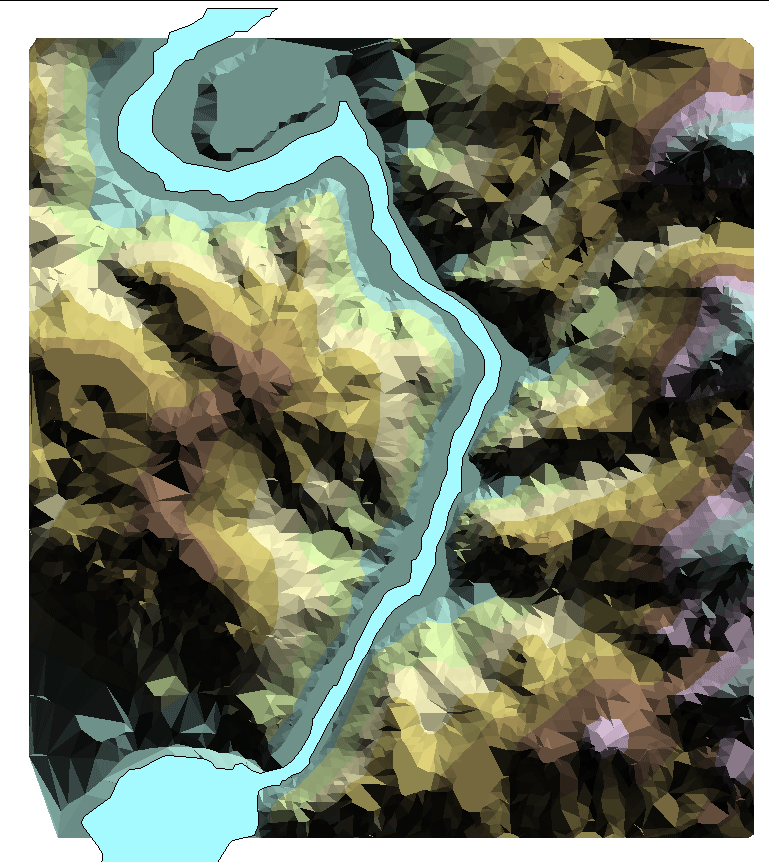
Missouri River superimposed in light cyan. |
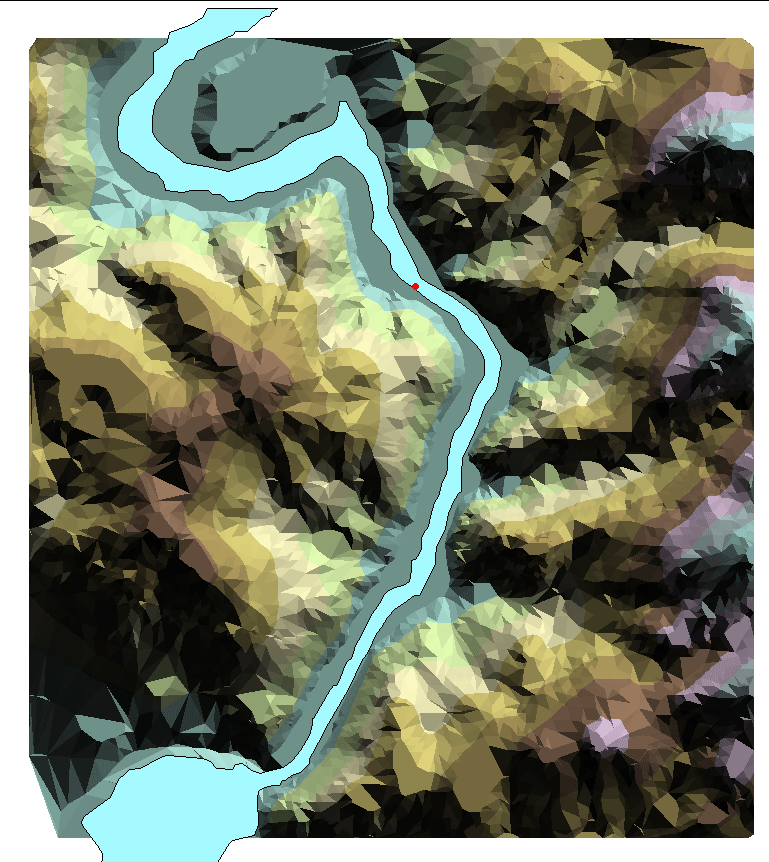
The Gates of the Rocky Mountains, red dot. |
Each
type of base topographic map has merits: the 1000 foot contour interval
map is useful, especially when represented as a TIN, as a general context
map. When the finest contour interval (10 feet) was used, the general
context was not evident. The TIN derived from the contour base shows
great detail. The 100 foot contour interval offers a balance between
the two. That map, however, was not a digitized map that would work
directly in a GIS (ArcView, ESRI). Thus, the contours were digitized
from the 100 foot base map, a TIN created from that base, and then the
TIN was put into ArcView 3D Analyst extension (ESRI) and saved as VRML
2.0, as a virtual reality of the scene. The much more highly detailed
USGS file renders a fine virtual reality scene; however, the size of that
file is over 177 MB and it causes many machines to crash. Thus, the
more modest file of 3 MB created from the 100 foot contour interval map
is included here. Readers should download (free) Cosmo Player from
http://ca.com/cosmo/
in order to view the virtual reality files directly in their internet browser.
| Click
here
to see an animation of contours with superimposed TIN; The Gates of the
Rocky Mountains are shown as a red dot.
Click here to see the virtual reality scene of "The Gates of the Rocky Mountains" derived from the 100 foot contour interval. |
What
else might illuminate historical and geographical texts of the future,
as an exploration in imaginative interactive communication and education?
One
might envision
References
DeLorme, Topographic Atlas on CD. http://www.delorme.com/
DeVoto, Bernard. The Journals of Lewis and Clark with a foreword by Stephen E. Ambrose, maps by Erwin Raisz. Mariner Books, Houghton Mifflin Company (Boston and New York), original copyright 1953; current version, 1997.
Digital Chart of the World. Environmental Systems Research Institute, http://www.esri.com/.
Lewis and Clark Across Missouri, http://lewisclark.geog.missouri.edu/index.shtml
USGS, EROS Data Center, http://edc.usgs.gov/geodata/